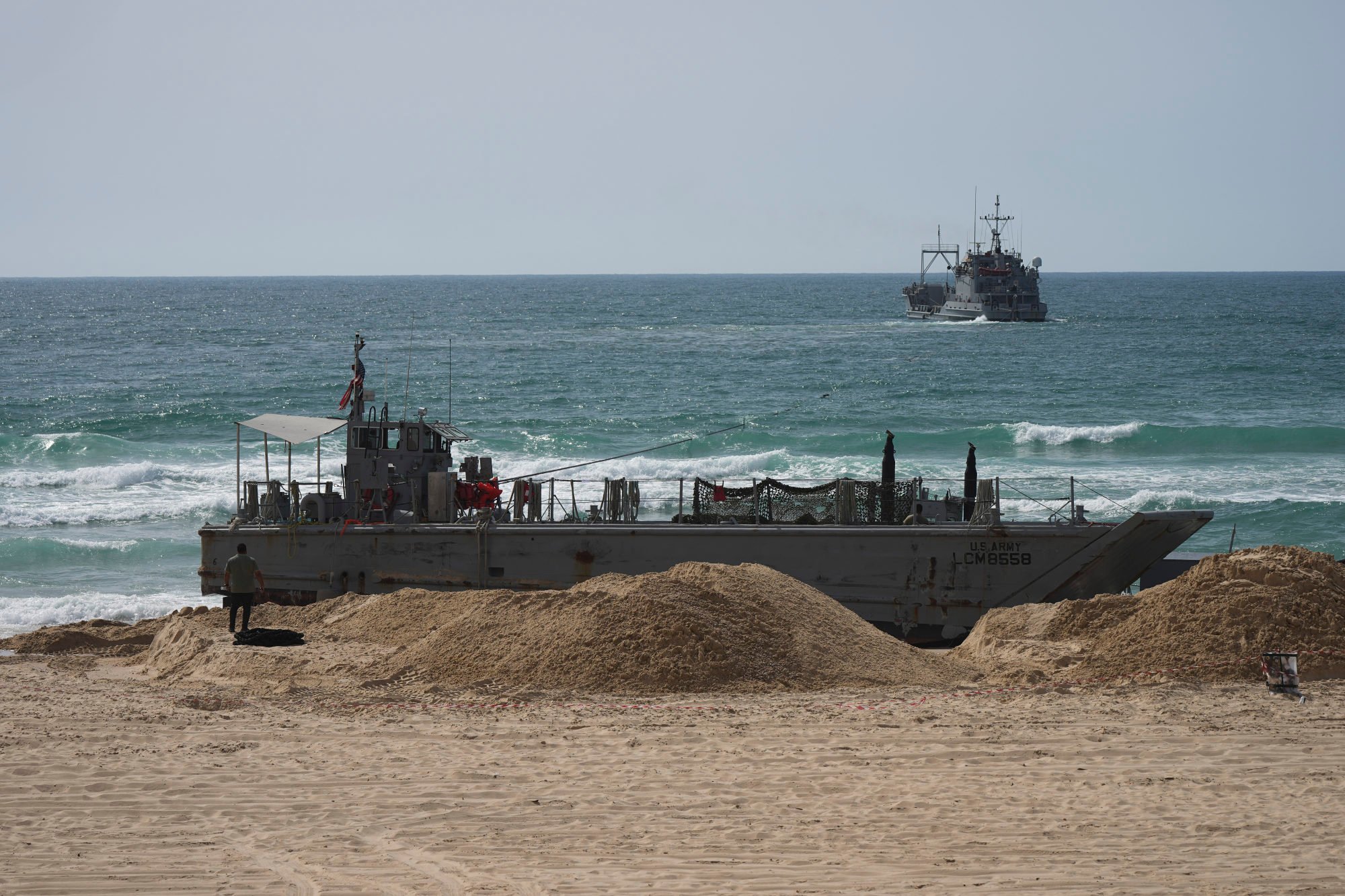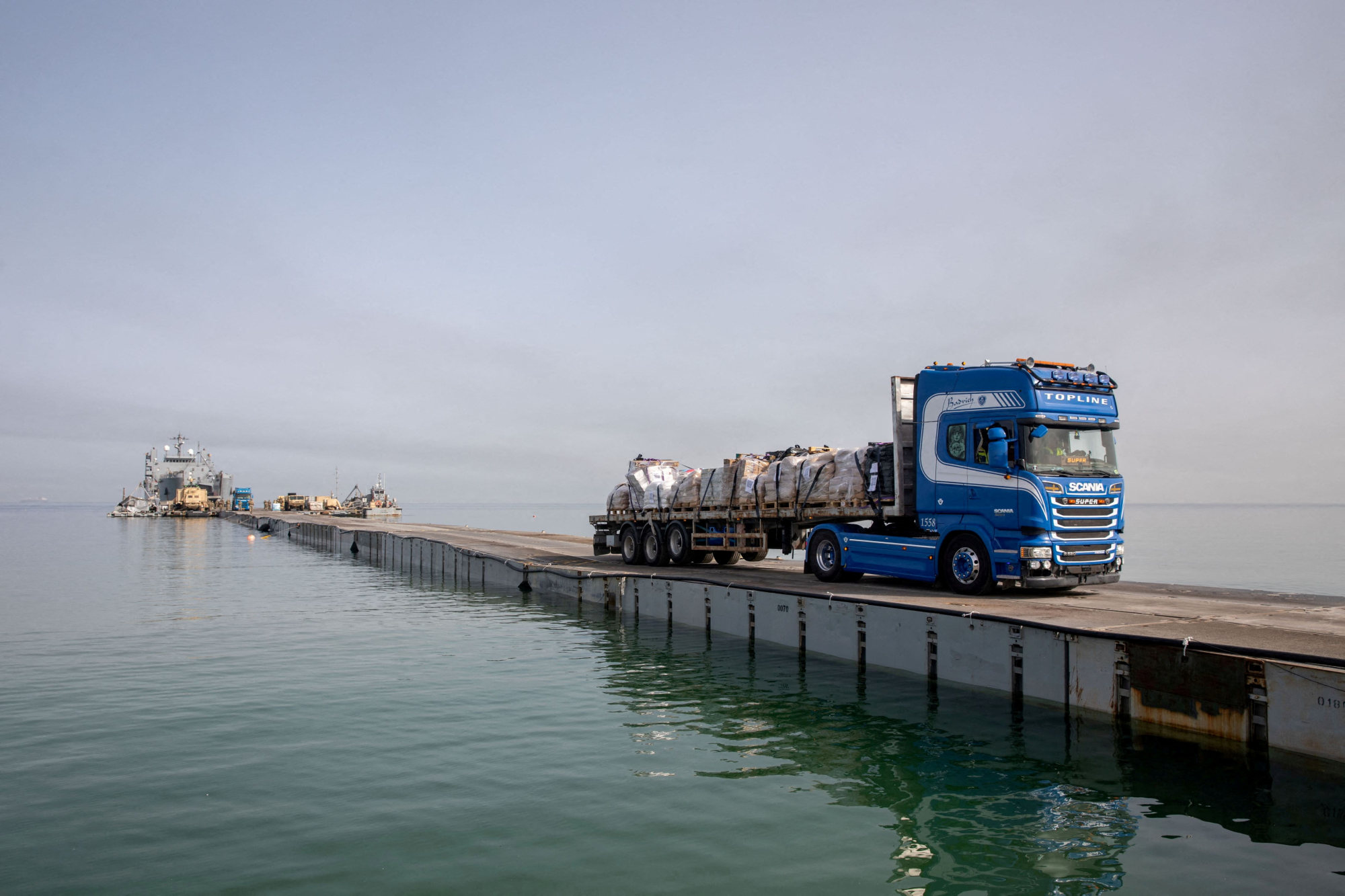Gaza itself has no harbour deep enough for larger cargo vessels. Cargo ships bring aid supplies from Cyprus to a floating platform a few kilometres off the coast of the Gaza Strip.
The goods are then loaded onto smaller ships that can dock at the temporary pier, where their cargoes are transferred to lorries to be distributed across the territory.
“The Gaza pier regretfully amounted to an extremely expensive distraction from what is truly needed, and what is also legally required,” said Michelle Strucke, director of the Centre for Strategic and International Studies Humanitarian Agenda.
That is “safe and unimpeded humanitarian access for humanitarian organisations to provide aid for a population in Gaza that is suffering historic levels of deprivation,” she said.
US forces have also dropped aid by air, but that plus deliveries via the pier “were never meant to substitute for scaled, sustainable access to land crossings that provided safe access by humanitarian workers to provide aid,” Strucke said.
“Pursuing them took away decision makers’ time, energy, and more than US$200 million US taxpayer dollars.”
Biden announced during his State of the Union address in March that the US military would establish the pier and American troops began constructing it the following month, initially working offshore.
But in a sign of issues to come, high seas and winds required construction to be relocated to the Israeli port of Ashdod.
The pier was completed in early May, but weather conditions meant it was unsafe to immediately move it into place, and it was not attached to the Gaza coast until the middle of the month.

High seas caused four US Army vessels supporting the mission to break free of their moorings on May 25, beaching two of them, and the pier was damaged by bad weather three days later, requiring sections to be repaired and rebuilt at Ashdod.
It was reattached to the coast on June 7, but aid deliveries were soon paused for two days due to bad weather conditions.
The pier then had to be removed from the shore and moved to Ashdod on June 14 to protect it from high seas. It was returned to Gaza this week and aid deliveries have now resumed.
“Overnight, the transfer of humanitarian assistance from Cyprus to Gaza resumed with more than 656 metric tons, or 1.4 million pounds, being delivered to the marshalling yard in Gaza today,” Pentagon spokesman Pat Ryder said on Thursday.
Raphael Cohen, a senior political scientist at the RAND Corporation research group, said the “pier effort has yet to produce the results that the Biden administration hoped”.
“Aside from the weather issues, it’s been quite expensive and has not fixed the operational challenges of getting aid into Gaza,” he said.

Cohen said that despite the issues with the pier, it does provide another entry point for aid and allows assistance to be brought in even when land crossings are closed – a persistent problem that has worsened the dire humanitarian situation in Gaza.
And he said the effort may also help improve future deployments of the military’s temporary pier capability, which was last used operationally more than a decade ago in Haiti.
In addition to weather, the project is facing a major challenge in terms of the distribution of aid that arrives via the pier, which the UN World Food Programme decided to halt while it assesses the security situation – an evaluation that is still ongoing.
That announcement came after Israel conducted a nearby operation earlier this month that freed four hostages but which health officials in Hamas-ruled Gaza said killed more than 270 people.
The UN has said it welcomes all efforts to bring in aid, but that land routes are the most important routes for the arrival of assistance.
Strucke emphasised that “what Gazans need is not the appearance of aid – they need actual aid to reach them”.
Washington “should be very careful not to support actions that may look good on paper to increase routes to provide assistance, but do not result in aid actually reaching Palestinians in need at scale,” she said.
Additional reporting by dpa

